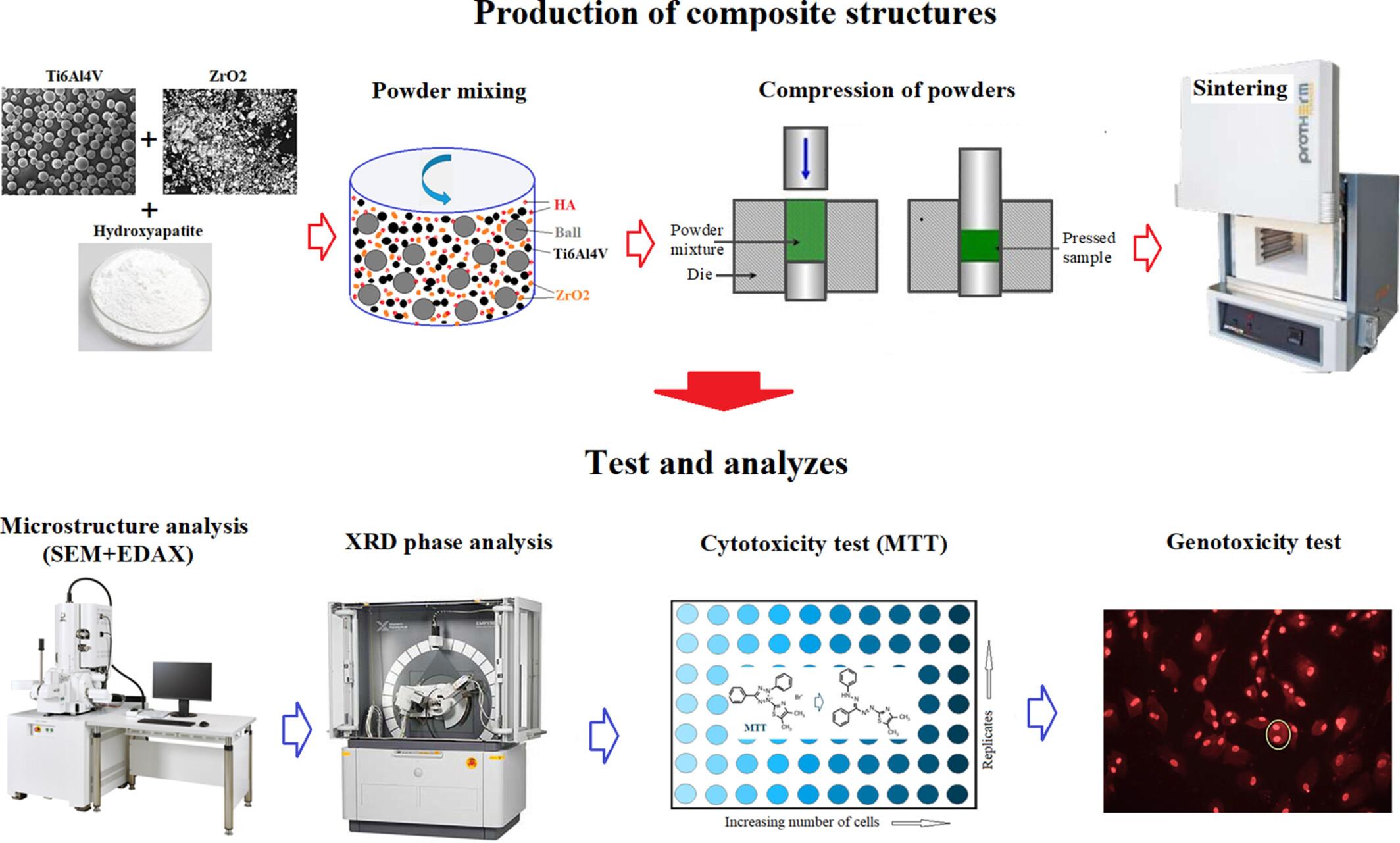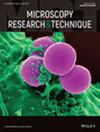Synthesis of biocompatible Ti-6Al-4V composite reinforced with ZrO2 and bioceramic produced by powder metallurgy: Morphological, structural, and biocompatibility analysis
Abstract
In this experimental study, the initial phase involved preparing composite structures with various mix ratios using the Ti-6Al-4V alloy, widely used in clinical applications, in conjunction with ZrO2 and hydroxyapatite (HA) synthesized via the precipitation method, employing powder metallurgy techniques. Subsequently, the microstructures of the resultant hybrid composite materials were imaged, and x-ray diffraction (XRD) phase analyses were conducted. In the final phase of the experimental work, tests were performed to determine the biocompatibility properties of the hybrid composites. For this purpose, cytotoxicity and genotoxicity assays were carried out. The tests and examinations revealed that structures compatible both morphologically and elementally were obtained with no phase transformations that could disrupt the structure. The incorporation of ZrO2 into the Ti-6Al-4V alloy was observed to enhance cell viability values. The value of 98.25 ± 0.42 obtained by adding 20% ZrO2 gave the highest cell viability result. The addition of HA into the hybrid structures further increased the cell viability values by approximately 10%. All viability values for both HA-added and HA-free groups were obtained above the 70% viability level defined in the standard. According to the genotoxicity test results, the highest cytokinesis-block proliferation index values were obtained as 1.666 and 0.620 in structures containing 20% ZrO2 and 10% ZrO2 + 10% HA, respectively. Remarkably, all fabricated composite and hybrid composite materials surpassed established biocompatibility standards and exhibited nontoxic and nongenotoxic properties. This comprehensive study contributes vital insights for future biomechanical and other in vitro and in vivo experiments, as it meticulously addresses fundamental characterization parameters crucial for medical device development.
Research Highlights
- Support of optimum doping rates ions on hybrid composites and concentrations.
- Development of uniform surface appearance and distributions/orientations of microcrystals on ceramic compounds
- Improvement of cell viability and desired increase in biocompatibility with the doping of HA.


 求助内容:
求助内容: 应助结果提醒方式:
应助结果提醒方式:


